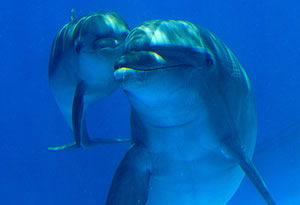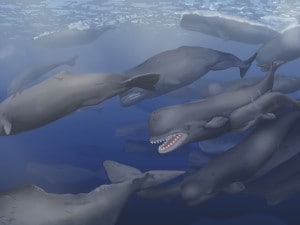On Tuesday the European Union joined 79 countries from Africa, the Caribbean, and the Pacific to “push for an ambitions, durable and legally binding deal with a strong review every five years”. Throughout the week the United States also joined the ambitions coalition. The 29 page draft agreement was released this week but, there are still many points to be negotiated by both rich and poor nations. Read more…
 Fashion meets sustainability yet again! This week Adidas and Parley for the Oceans announced that they designed a shoe made almost entirely from ocean waste. The upper part of the shoe is made with ocean plastic and the midsole is 3D-printed using recycled polyester and gill nets. This is the second eco shoe that Adidias has developed. Read more…
Fashion meets sustainability yet again! This week Adidas and Parley for the Oceans announced that they designed a shoe made almost entirely from ocean waste. The upper part of the shoe is made with ocean plastic and the midsole is 3D-printed using recycled polyester and gill nets. This is the second eco shoe that Adidias has developed. Read more…
This week, an article published in the Journal of Applied Ecology reported that there are not invasive species in the Arctic. Scientists believe that the invasive species were introduced from the water that travels in ballasts of ships. After research, it was concluded that the ballasts includeds a total of 23 non-native species, including crabs, barnacles, and copepods. Although many of these species can not survive the extreme cold, on species of crab is resilient. Read more…
 A research team from SpeakDolphin.com recently shared a “what the dolphin saw” image of a submerged man. The image reveals that dolphin echolocation results in fairly detailed images. It is possible that dolphins employ a ‘sono-pictorial’ form of language. To read more about the experiment and see the CymaScope image of how a dolphin saw a submerged man, click here…
A research team from SpeakDolphin.com recently shared a “what the dolphin saw” image of a submerged man. The image reveals that dolphin echolocation results in fairly detailed images. It is possible that dolphins employ a ‘sono-pictorial’ form of language. To read more about the experiment and see the CymaScope image of how a dolphin saw a submerged man, click here…
5. Beluga Whales Blow Bubbles to Express Mood
 After studying the activity of over 11,000 Beluga whales, researchers from Canisius College concluded that there is more detail to their underwater bubbling. Beluga whales blow bubbled into four different shapes- blowhole drips, blowhole bursts, blowhole streams, and mouth rings. Each of those shaped signal a different mood. Blowing underwater bubbles is a behavior used by many whales to express emotion. On average, Beluga whales blow 58 bubbles per minute, this number will vary with the weather or other environmental factors. Read more…
After studying the activity of over 11,000 Beluga whales, researchers from Canisius College concluded that there is more detail to their underwater bubbling. Beluga whales blow bubbled into four different shapes- blowhole drips, blowhole bursts, blowhole streams, and mouth rings. Each of those shaped signal a different mood. Blowing underwater bubbles is a behavior used by many whales to express emotion. On average, Beluga whales blow 58 bubbles per minute, this number will vary with the weather or other environmental factors. Read more…
 In 1925, 14-16 million year old fossil was collected near Santa Barbara, California and was misidentified by a Smithsonian scientist as a walrus. An article published in PLOS ONE corrects the incorrect identification of this fossil to Albicetus oxymycterus. The name was developed because the species is a sperm whale like Moby Dick and the fossil is white. Scientists estimate that this whale was around 20 feet long and had a large mouth with huge teeth. Read more…
In 1925, 14-16 million year old fossil was collected near Santa Barbara, California and was misidentified by a Smithsonian scientist as a walrus. An article published in PLOS ONE corrects the incorrect identification of this fossil to Albicetus oxymycterus. The name was developed because the species is a sperm whale like Moby Dick and the fossil is white. Scientists estimate that this whale was around 20 feet long and had a large mouth with huge teeth. Read more…
Be sure to “LIKE” http://facebook.com/SeaSave to ensure our “Week in Review” is delivered to your newsfeed every Thursday.




